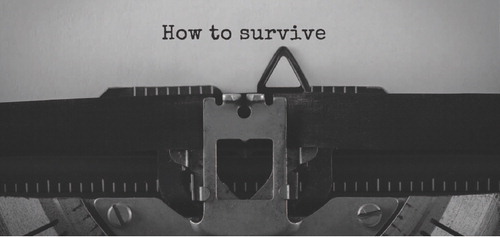EVERY NEW YEAR, millions of people resolve to make a change in their lives that is personally meaningful. Some change-making resolutions commit us to doing more: making and showing more of our own art, getting to the gym more often each week, becoming more organized. Other resolutions are about doing less: spending less time on social media, losing weight, entertaining fewer negative thoughts.
There are other times when change comes to us uninvited. The imposition of change in personal and professional realms of life can bring added stress and a heightened sense of uncertainty. Resilience in times of change can make all the difference.
Resilience is a kind of elasticity, an ability to bounce back from difficulties and keep going. For the artist, developing resiliency can be full of contradictions:
Pour your blood, sweat, and tears into your work. Maintain healthy boundaries. You must charge for your time. Don't charge too much, you have to make a living. Don't let money influence your expression. The customer is always right. Maintain your artistic integrity. You're born with artistic talent. Art can be learned. Stick with it. Know when to call it quits. (CitationWaters, 2018, para. 1)
Resilience in art, design, and art museum education is a collective striving, not a solitary one. The knowledge that is generated and shared in spaces like this journal helps ensure that integrity and innovation are possible in all corners of the field. Research—what I define as any systematic investigation that generates new knowledge—can strengthen and stretch the disciplines of art, design, and art museum education. We may even say research provides the elasticity without which our creative practices contract and become rigid, too stiff to bounce back when times change.
This issue of Art Education explores the varied ways art educators engage in research as an act of resilience, resistance, and renewal. In “Reclaiming Creativity Through Objects, Collaboration, and Site-Specific Work,” Karla Stauffer shares classroom research in which students' engagement in contemporary installation art stretched their definitions of art, sharpened their creative problem-solving skills, and bolstered pride in their artmaking.
In response to racial tension and resistance surrounding the display of Confederate monuments and the Confederate flag in public space, Melanie L. Buffington presents oft-forgotten historical contexts, along with bold ideas and new resources from contemporary art that support art, design, and art museum educators in facilitating discussion and artmaking related to contentious art debates, in “Confronting Hate: Ideas for Art Educators to Address Confederate Monuments.”
In light of changes to art educator certification, Nanyoung Kim describes her research on the latest teacher performance assessment tool and highlights the difficulties she and her preservice art education students faced in “Challenges of Teaching and Preparing edTPA.” Jennifer Fisher, in her article “‘They Didn't Tell Us How’: Teaching High-Ability Students in a Secondary Setting,” examines secondary art educators' preparedness for teaching high-ability art students and finds areas in which more professional education and support are needed to serve this special population of art students.
For “A Mini Body of Work: Art Practice as Research,” Judith A. Briggs and Nicole DeLosa present a detailed case study of how one art educator renewed her curriculum using creative practice and visual diaries as research methods with high school students. David Burton explores the importance of demography for opening up new ways of seeing the various facets of art education and where the field is going in “Demographic Research: The Big Picture in Research.”
The Instructional Resources, “Knolling: The Art of Material Culture” by Lauren Fritts, offers a range of work by sculptors, photographers, installation artists, and designers to illustrate knolling, a method of curating everyday objects, and shares a variety of ideas for cross-disciplinary K–12 studio activities.
In times of change, standing still may not be an option. Why not resolve every day to be inspired, grow, adapt, and, thus, sustain your art, design, or art museum education practice? Research, like that featured in this issue, could be creative fuel for our ongoing collective resilience.
Additional information
Notes on contributors
Amelia M. Kraehe
Amelia M. Kraehe is associate professor of art and visual culture education at the University of Arizona in Tucson. Email: [email protected]
Reference
- Waters, B. (2018, June 27). The resilient artist: One artist's path toward resilience and success [Blog post]. Psychology Today Retrieved from www.psychologytoday.com/us/blog/design-your-path/201806/the-resilient-artist

